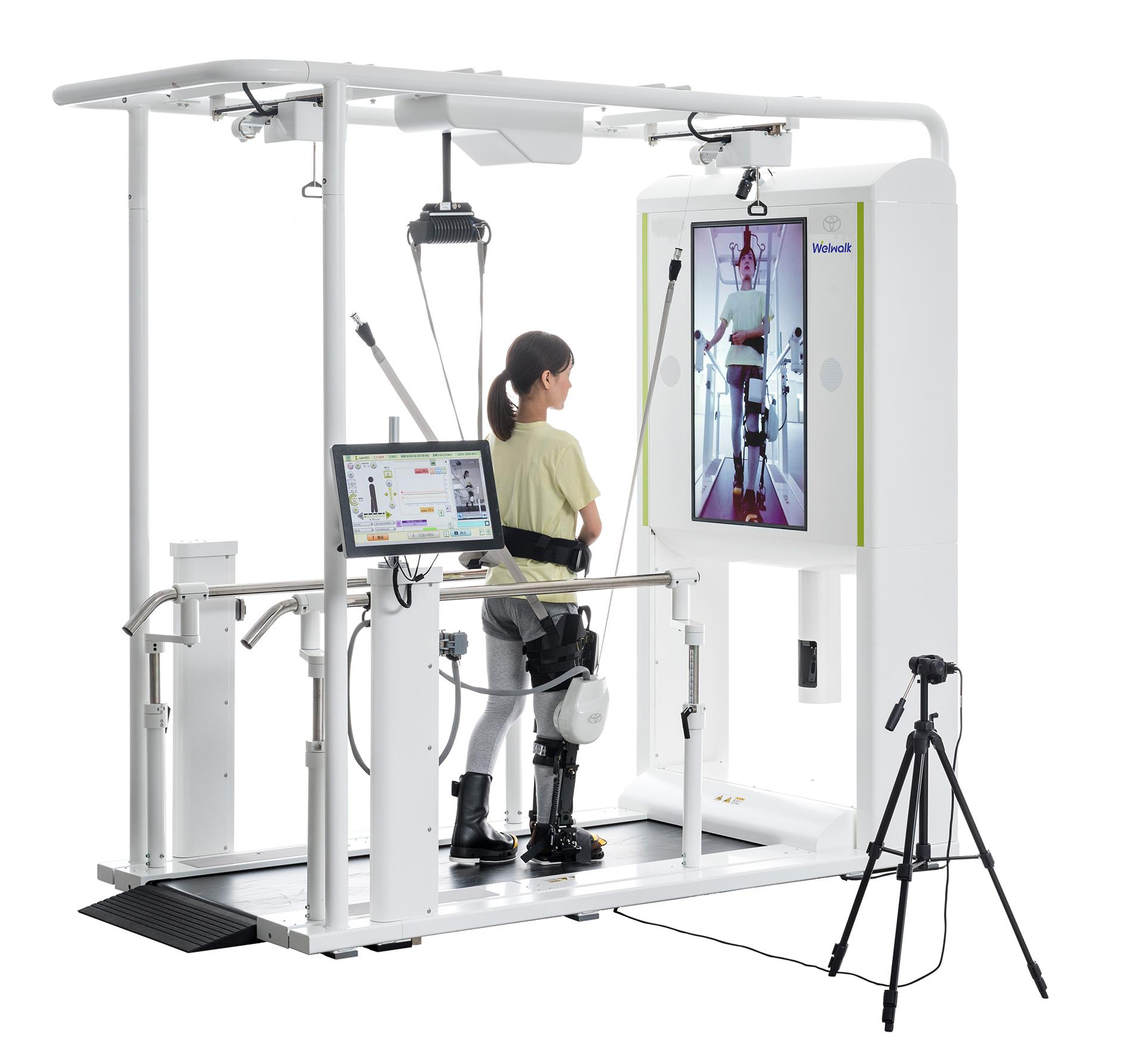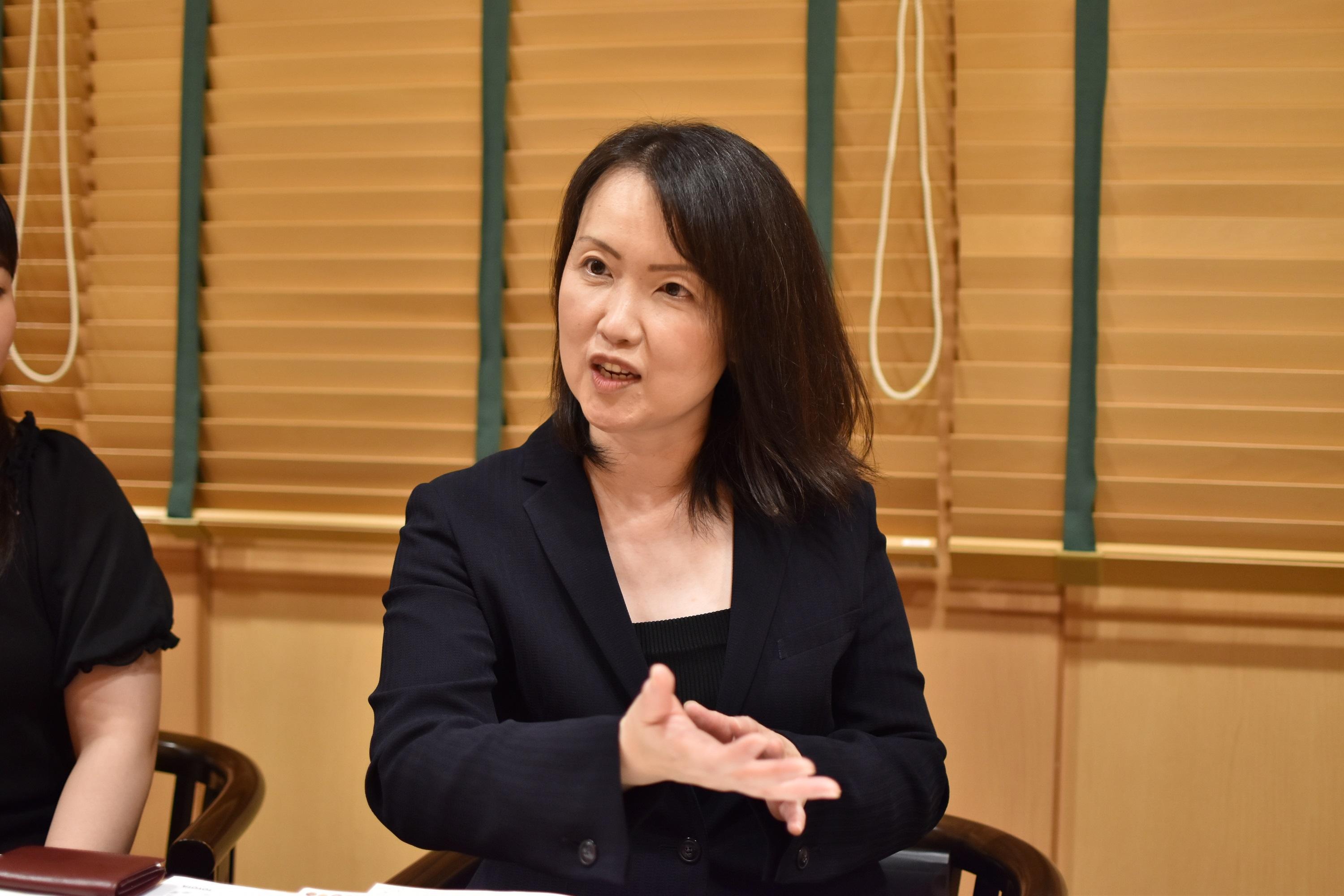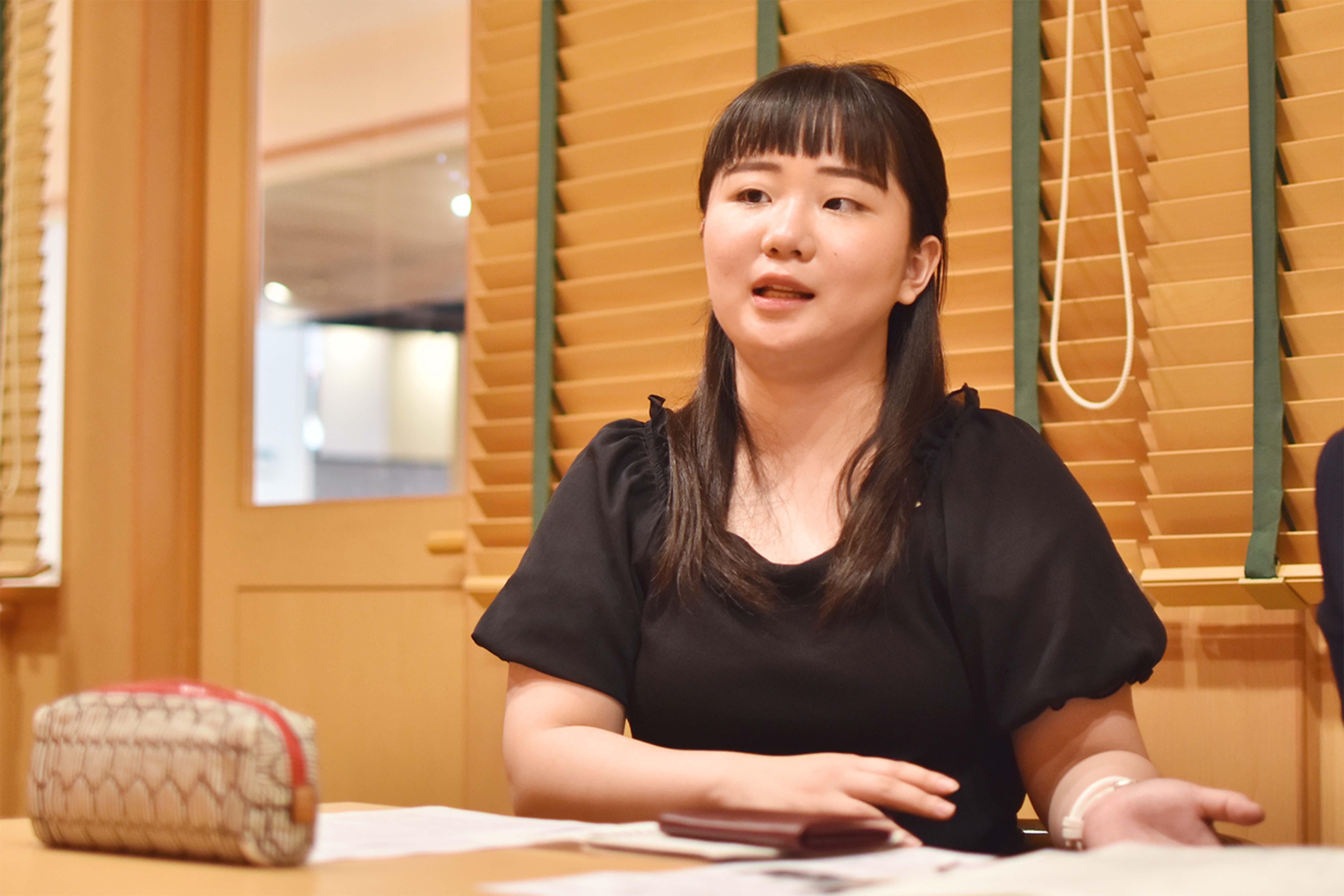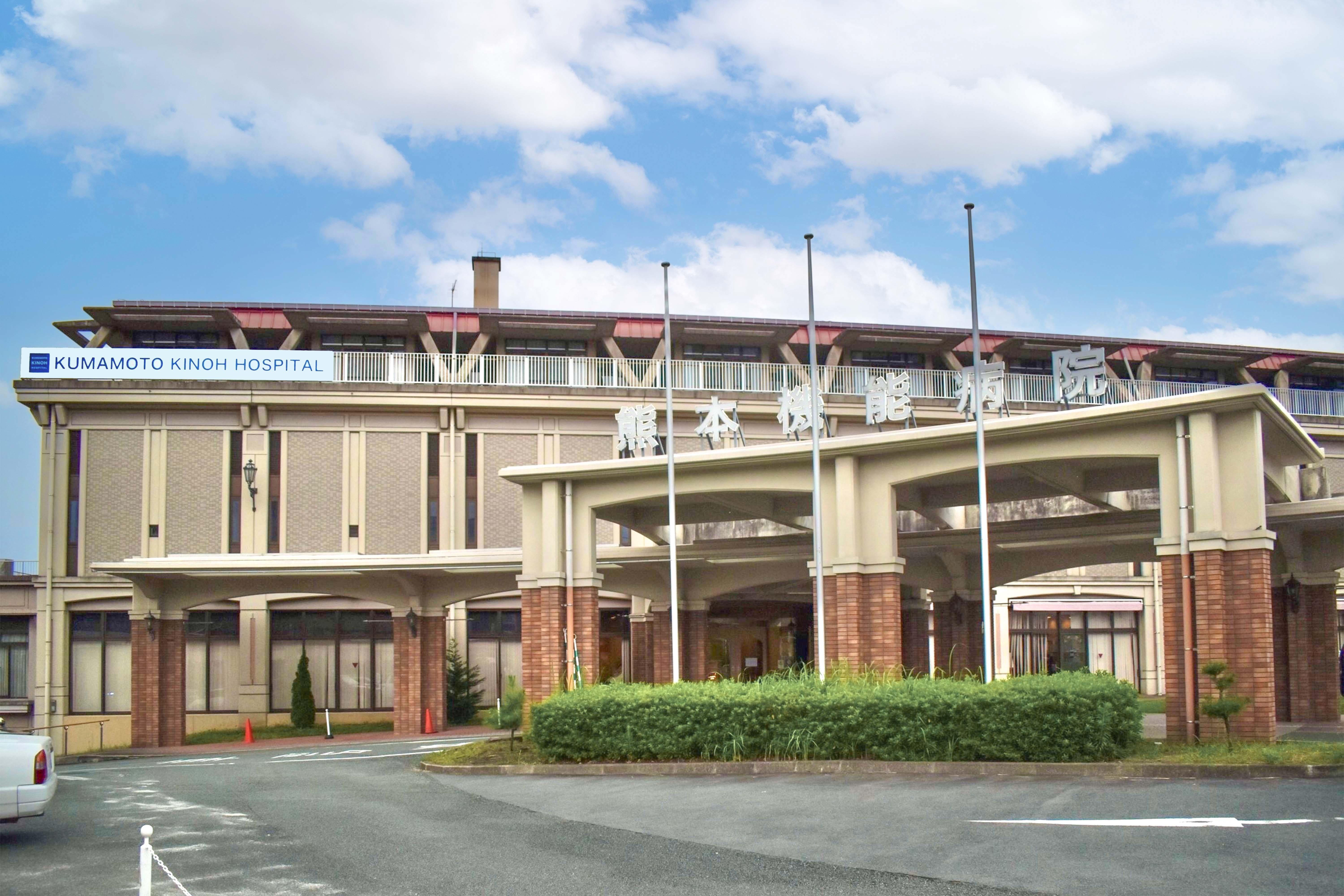
A smart, respected mother usually dressed in a suit and heels suddenly became unable to walk due to illness. A turning point for both mother and daughter was their encounter with a Toyota robot.

The previous article related the story of the collaboration between doctors and Toyota engineers in a process to develop the rehabilitation assist robot Welwalk. This article tells the story of a patient and her family, who explain how “Welwalk gave us hope to live.”

A single email from a patient
On September 20, 2020, Masayuki Imaida, Department Manager at the Healthcare Business Dept., New Business Planning Div., and responsible for development of Welwalk received an email. It was from a woman who was into her third day of rehabilitation using Welwalk.
“A subarachnoid hemorrhage left me unable to walk properly and I had to give up wearing heels. My daughter, who I had raised as a single mother, would admire me when she saw me in a suit and heels, saying how nice I looked. She told me that it was enough that I had survived my ordeal. However, after starting treatment with Welwalk I am filled with hope that one day I might once again be able to wear heels.”
This email was from Masami Urata, at the time aged 46. Two-and-a-half years ago, in March 2019, prompted by her beloved daughter Sui’s move to university, she herself had moved from Osaka to start a new life in Kumamoto in Kyushu. About one year after the mother and daughter had started their new life in unfamiliar surroundings, Masami suddenly collapsed at home.
A mother stricken by sudden illness
At around 9:00 am on July 20, 2020, Sui was in her own room when she heard the sound of something falling in the next room. It was the room where until just a moment earlier Masami had been getting herself ready. Sui called out, “Are you okay?” but received no reply. Thinking this strange, she went to look and found her mother curled up on the floor.
She rushed over to her mother and tried to touch her head, but Masami brushed her hand away. Masami had worked for 20 years in the medical sector as a counselor and coordinator, and Sui had seen her mother in action at work on many occasions. She immediately realized from her mother’s actions that there must be something wrong in her head.
She immediately called an ambulance, and her mother was taken to Kumamoto Medical Center, where she arrived about 10:00 am. Tests showed that she had suffered a subarachnoid hemorrhage.
“Although there has only been a small amount of bleeding, unless we operate now we won’t be able to save her. We will open her head to operate.” Hearing these words from the doctor, Sui’s mind went completely blank.
Sui vaguely remembers saying, “I’m sorry” to her mother, and crying as her mother was wheeled into the operating theater. By the time that the eight-hour operation was over it was well past dark.
A mother turned into a different person
Although the operation was a success and Masami’s life had been saved, looking back on that time Masami herself says, “I was really sulking a lot.”

In her medical check-up she received after coming to Kumamoto they found nothing wrong with her. It wasn’t just that year either, nothing had ever shown up on any of her annual medical checks.
She could only think bitterly of the misfortune that she had experienced, asking herself, “Why has this happened to me, when more than anyone I took care of my health and watched what I ate so that I wouldn’t cause trouble to anyone else? Why is life so unfair? Why is it me who has to go through this?”
It was about this time that she also started to notice that there was something wrong with her right leg.
“After surgery, when I came round in bed, the doctor was there giving me instructions. He told me to move my arms and I could. But when he said to move my legs, I found that I couldn’t.”
Even when trying to roll out of bed or stand up, it was no good. Even when seated her body tended to lean over. After surgery various tests confirmed that there was a problem and that rehabilitation would be necessary.
“What if I can never walk again?” Masami felt as if she was being crushed by the loneliness and despair of living a life with no clear future. Sui also experienced the same feelings.
“One day when I came to hospital to change some of my mother’s things, she passed in front of me using a walking frame. I was shocked. She had no disabilities and I thought that the walking frame was just for support, but I could see clearly that she was dragging her right foot.”

Sui had always admired her mother as she headed out to work in a suit and heels. She had also dreamed of the day that she might get married, when she and her mother would walk down the aisle together. She felt as if both her admiration and dreams were crumbling in front of her eyes and she couldn’t hold back the tears any more.
Even so, what was even more painful than seeing her not being able to walk was that her mother, who had been such a vibrant person, had turned into somebody completely different in the depths of her despair. She even refused the rehabilitation recommended by her primary care doctor. The sight of her mother with no life in her eyes, slumped back and blocking out everyone and everything, broke Sui’s heart.
“I loved the sight of my hard-working mother and I thought then that she probably didn’t have the strength to fight any more. Whenever she spoke it was only to say, ‘Whatever the case, I’m going home.’ The next time I saw her was when she transferred to Kumamoto Kinoh Hospital, but I couldn’t face bringing up the subject of her legs.”
A stubborn mother transformed by the warmth of staff
Two months had passed since her hospitalization and as Masami passed the days filled with despair and depression, her primary care doctor recommended her to transfer to Kumamoto Kinoh Hospital.
Her primary care doctor told her that the hospital “had something interesting to try,” but even then Masami didn’t budge from her determination to return home. She was then told, “In that case we can’t discharge you from this hospital,” which only exacerbated her dark mood. She said, “I’ll go there for two weeks, but after that I am definitely going home.”
She transferred hospitals, but her mood didn’t change overnight. She started off her life in her new hospital surroundings by insisting abusively, “I don’t want rehabilitation and I am going home in two weeks. I don’t need any more treatment than that.”

At her first session of rehabilitation she refused to look at the physiotherapist and maintained a sour face the entire time. Even then the smile never left the physiotherapists’ face as they moved Masami’s legs, trying to restore the lost feeling to them.
Also, following the surgery Masami had become extremely sensitive to smells and was unable to eat anything. At these times too, a nutritionist would come round and tell her, “If you lose your muscles, you won’t be able to do your rehabilitation exercises, so let me prepare something you can eat.”
Working with Masami, the nutritionist tried to find something that she could eat and kindly pointed out things about her future diet and nutrition.
Masami says, “That was the point when I started to realize that this hospital was different from all other hospitals I had known. They were working as a team to teach me how to live again, including everything from eating, moving, talking and thinking. Even though I had my back turned to them and was covering my ears in an attempt not to listen, they were always there supporting me with a smile.”
Even Masami gradually opened up to the warmth of all the hospital staff, from doctors to physiotherapists. Before she had only made the shortest of responses to messages she received from Sui, but she started sending longer messages about the kind of exercises she had done that day.

“No need to despair anymore”
Hiroomi Hamasaki, the managing physiotherapist in charge of Masami’s rehabilitation, talks about stroke patients’ suffering in this way.
“As a stroke suddenly takes away your ability to walk, in terms of mental situation, the patient initially finds themselves experiencing deep sadness and anxiety. Almost all of the (recovery phase) patients who come to our hospital are in a wheelchair or using a walking frame, and you certainly can’t immediately say to them, ‘Get up and walk.’ What we do is work with the patients and help overcome challenges together, sharing processes that will help recovery, and hopefully assisting them in gradually becoming more positive.”

Masami had just begun to open up to the hospital staff when the Welwalk was recommended to her, just before the end of the two weeks that Masami had said was the longest that she would stay in hospital.
On entering a different rehabilitation room to her usual one, the first thing that Masami noticed was a large medical device with the Toyota logo on it.
“Is that Toyota as in the car maker Toyota?”
“Yes, it’s a medical device made by Toyota. Do you want to try?”
“Yes, please!”
Masami didn’t hesitate. Her legs were measured there and then so she could try it out the next day. Before she could change her mind Masami had started rehabilitation exercises using Welwalk.
She could see herself on the monitor. Although she was hooked up and suspended by various braces, the moment she moved her heart leapt.
It seemed like a dream to see herself walking again. For the first time she felt that a ray of hope had shone in the darkest depths of her heart, a place she had been languishing with no idea of where she was headed.
“It was as if someone had put a spell on me. I felt that with this machine I could maybe learn to walk again.”
It was around this time that Sui visited her mother in hospital to change some of her things. As she was about to enter the elevator after walking down the long hospital corridor, she thought she heard a once-familiar cheerful voice.
“‘What was that?’ I wondered and as I looked over I saw my mother walking. The leg that she had been dragging was moving. Before she had looked so sad, but now she was walking with a smile. I was so happy that she could walk again and that they had changed my mother back to the person I knew. I felt that there was no need to despair.”
That day, after Masami had finished her rehabilitation exercises, she telephoned Sui.
“I’m sorry, I won’t be able to come home in two weeks.”
“That’s fine, I’ll bring you some more things. Work hard on your exercises.”
That was the instant that Sui realized that a month-and-a-half after falling ill, she had got the mother she knew and loved back.
Toyota is there at life’s turning points
Masami says that upon first encountering Welwalk she felt a mysterious connection.
“Looking back on my life, Toyota has always been there at various turning points. The car that my father drove when bringing me back from the hospital after I was born was a Crown. I started my happiness-filled life safe in my mother’s arms, riding in a Toyota.
Then when I was in my third year at high school the first car I fell in love with at first sight was the AE86. With the money I had saved from New Year’s gifts I received from a young age and the money I had earned from my part-time job, I bought one. During my university years I would spend weekends and holidays in my car, and although every day I had to study hard, the thought that my car was waiting for me in the car park gave me the incentive to carry on.
Then I became pregnant with a new precious life, and the car that I brought my beloved daughter home from hospital in was a pure white Supra. At every turning point in my life Toyota had been there for me. Then, in the depths of my desperation, the name that sprang before my eyes once again was Toyota.”
Seeking to broaden patient options
As her rehabilitation progressed smoothly and she started to regain something of her old self again, Masami asked herself a question: “Why didn’t I know about this device, even though I have worked in the medical sector for such a long time?”
When she spoke to other patients that she had got to know on the hospital ward, many of them also said they had never used or never heard of it. When she asked about this, she was told that the Welwalk is not used on all patients, but rather the doctors and physiotherapists had decided that it was best used mainly on hospitalized stroke patients.
Masami thought that it could also be used for patients who had undergone knee surgery, and that if it could continue to be used regularly after being discharged from hospital it could also be effective in correcting any strange walking habits.
One female patient in her 70s told Masami that her husband suffered from paralysis of the lower limbs due to the aftereffects of a stroke and used a walking frame in the house.
They used to enjoy visiting hot spring resorts as a couple, but now they were unable even to enjoy daily morning and evening walks together. “If he had been given the option of using Welwalk he may have been able to walk again.” Masami was distressed to hear these words spoken in tears by a fellow patient.
Masami herself realized that unless she had not been so strongly encouraged by her primary care doctor back on that fateful day, she too may still be dragging her right foot.
“Like choosing a car, it is important for patients to also have treatment options,” says Masami.
s someone working in the medical sector, Masami felt strongly about this issue and she now shares her own personal experience with medical practitioners and students in medical schools who she meets in the course of her work.
Bringing happiness to patients and their families
Interviews for this article were conducted just over nine months after Masami was discharged from hospital. Although she carried a walking stick in her left hand, she was back wearing a suit and heels again.
Now that she has taken the first step forward once again, Masami is dreaming of the day when she can put down her stick and walk again. Sui also speaks excitedly how, “We still have the high heels that she can wear again once she gets even better!”
Starting from the day that they received Masami’s email, the Welwalk development team have become friends with the Uratas and meet from time to time to exchange opinions. Looking back on his encounter with Masami and Sui and hearing their thoughts, Imaida speaks about his own determination in this way.
“We are working with patients who are facing the largest crisis ever in their lives and for whom treatment is the ‘last chance.’ We have always tried to respect the fact that patients are facing such difficult situations, but even so we were worried that we didn’t have a clear image of who it truly was that our work was for. It was through our encounter with Ms. Urata and her daughter that we were able to realize that what we do is useful to individual patients facing a difficult moment in their lives.”
“Also, we were truly overjoyed to get a real sense that our thoughts and ideas are reaching not only the patients but also their families who are fighting against despair together. We recognize that it is important to work to make it possible for all people who want to receive such rehabilitation care to be able to choose Welwalk, so that everyone can walk out of hospital with a smile on their faces.”
Masami closes the interview with this comment.
“Toyota aims to ‘produce happiness for all’, doesn’t it? At the most critical time of my life Toyota was there for me. I hope that whatever happens from now it will always be there for me.”


